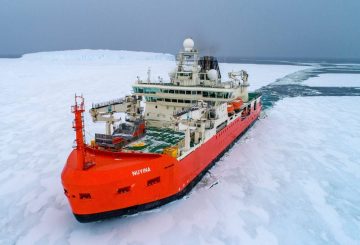Tatlong ina sa New Zealand ang nagbabahagi ng kanilang natatanging karanasan sa pagiging magulang – mula sa pagkakaroon ng isang ‘himalang’ sanggol, hanggang sa pagiging magulang bilang isang trans woman, hanggang sa pagpapalaki ng tatlong hanay ng kambal.
Si Tressa Simonsen, isang tagapag-alaga mula sa Tauranga, ay kilala bilang ina na nagsilang ng tatlong hanay ng kapatid na kambal na lalaki. Ang posibilidad na mangyari ito ay 500,000 hanggang isa. Ang kanyang mga anak na lalaki, sina Sharaz at Shaqiel (24), Daklan at Darius (15), at Kelly at Kramer (13), ay may tatlong magkakaibang ama. Sa kabila ng mataas na panganib ng mga komplikasyon sa maraming kapanganakan, malusog ang lahat ng kanyang mga anak na lalaki. Ang pagpapalaki ng anim na batang lalaki lamang ay naging hamon, lalo na sa kanyang diagnosis ng fibromyalgia at rheumatoid arthritis. Gayunpaman, ang kanyang mga anak na lalaki ay naging suporta at nakakatulong, lalo na sa mga gawain sa bahay at pagpapatakbo sa paaralan
Si Lexie Matheson, isang transgender aktibista, entertainment, at tagapagturo, ay may apat na anak. Sa kabila ng pagpuna mula sa mga indibidwal na anti-trans, ipinahayag niya ang kanyang karapatang tawagin ang kanyang sarili na isang ina. Lumipat siya noong 1997 at kalaunan ay pinasalan ang kanyang kasalukuyang asawa, si Cushla. Ang kanilang anak na lalaki, si Finn, ay ipinaglihi sa gabi ng kanilang kasal. Si Finn, na ngayon na 21, ang ganap na kagalakan ng buhay ni Lexie. Naniniwala siya na masuwerte si Finn na magkaroon ng dalawang ina na nagmamahal at sumusuporta sa kanya.
Si Qiane Matata-Sipu, isang nag-award na mamamahayag, litratista, visual artist, at aktibista, ay nakikipaglaban sa kawalan ng katabaan dahil sa polycystic ovary syndrome. Sinubukan niya at ng kanyang asawa ang iba’t ibang paggamot sa pagkamayabong at pagbabago sa pamumuhay sa loob ng anim na taon bago magpasya Matapos ibahagi ang kanyang karanasan sa isang artikulo ng magasin, natural siyang buntis at ipinanganak ang kanilang anak na babae, si Haeata te Kapua. Pagkalipas ng apat na taon, nagkaroon siya ng pagkalaglag at hinihikayat siya ng mga bukas na talakayan tungkol sa mga isyu sa pag Ang pangalan ng kanyang anak na babae ay nangangahulugang sinag ng liwanag na lumabas sa mga ulap ng kadiliman, na sumasagisag sa kanyang paglalakbay patungo sa ina.





























































